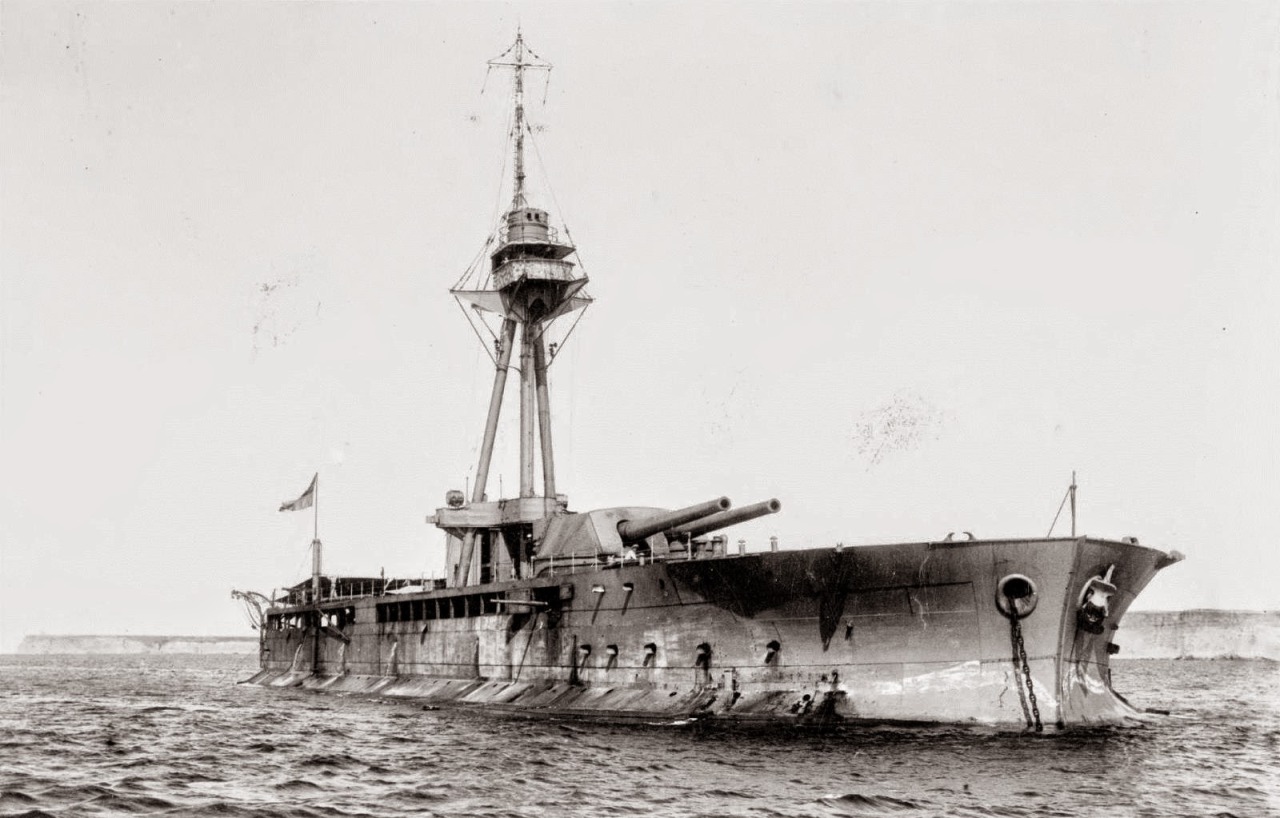HMS Abercrombie 1915
HMS Abercrombie was a First World War Royal Navy Abercrombie-class monitor.
On 3 November 1914, Charles M. Schwab of Bethlehem Steel offered Winston Churchill, then First Lord of the Admiralty, the use of four 14 in (356 mm)/45cal BL MK II twin gun turrets, originally destined for the Greek battleship Salamis. These turrets could not be delivered to the German builders, due to the British Naval blockade. The Royal Navy immediately designed a class of monitors, designed for shore bombardment, to use the turrets.
The ship was initially named Admiral Farragut in honour of the United States Admiral David Farragut, and reflecting the origin of the guns. She was laid down at the Harland and Wolff shipyard in Belfast on 12 December 1914. Faragut was launched on 15 April 1915. She was built to a high level of completion before launching, with nearly all machinery in place except for the turret. As the United States was still neutral, the ship was hurriedly renamed HMS M1 on 31 May 1915. She was then named HMS General Abercrombie on 19 June 1915 and renamed HMS Abercrombie on 21 June 1915.
Abercrombie sailed for the Dardanelles on 24 June 1915, and provided fire support during the Battle of Gallipoli. She remained in the Eastern Mediterranean and the Aegean, until returning to England in February 1919. She was decommissioned in May 1919 and was disarmed in June 1920. Sold for breaking up in May 1921, she was retained in reserve until resold on 25 June 1927 to the Thos W Ward shipyard at Inverkeithing for scrapping.





